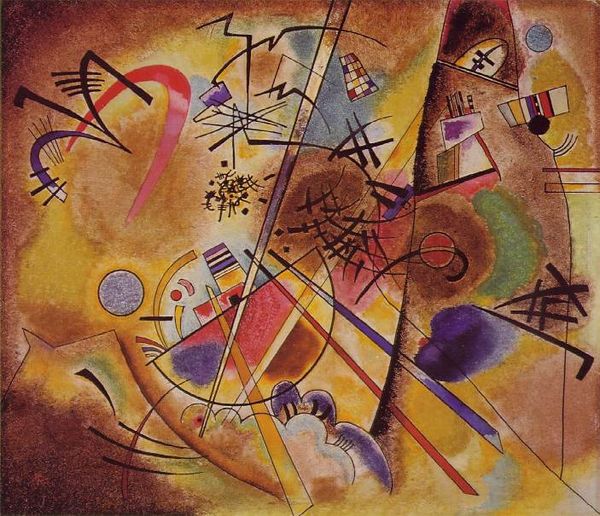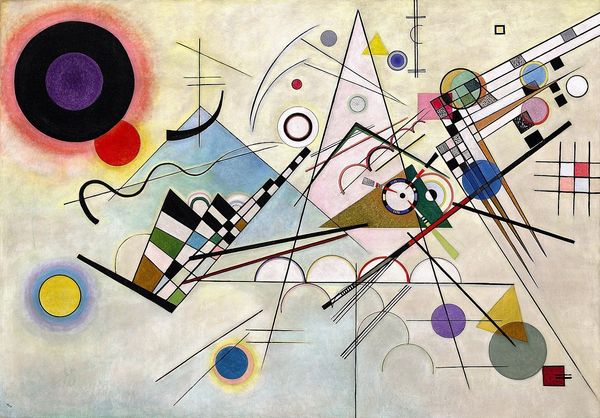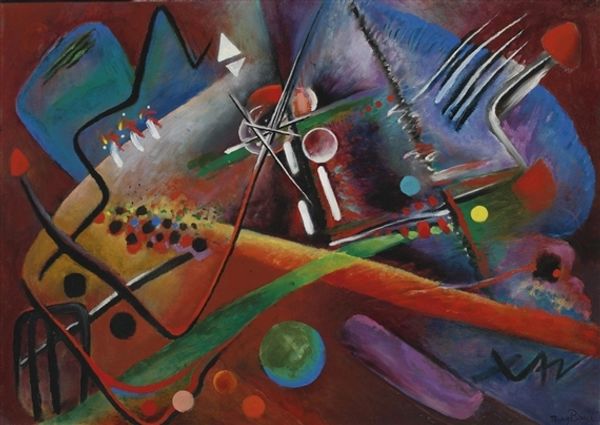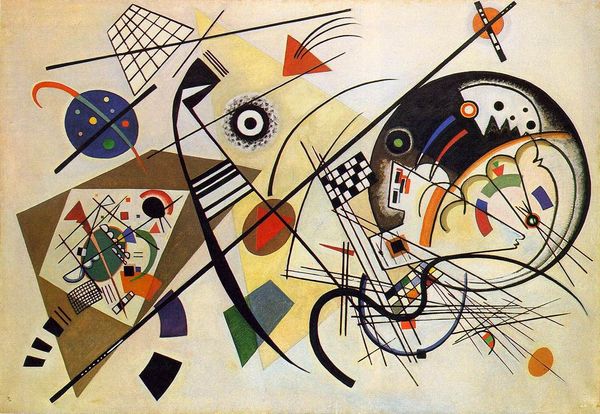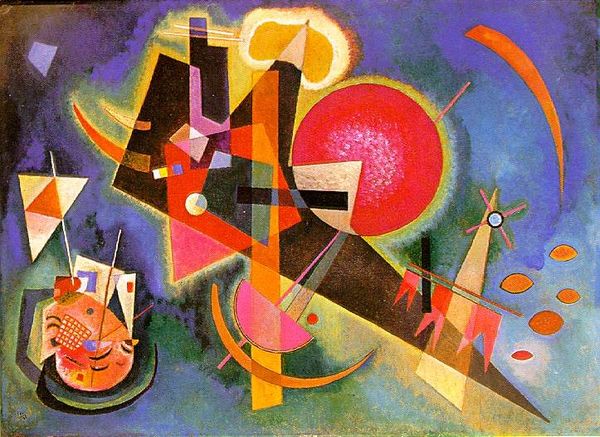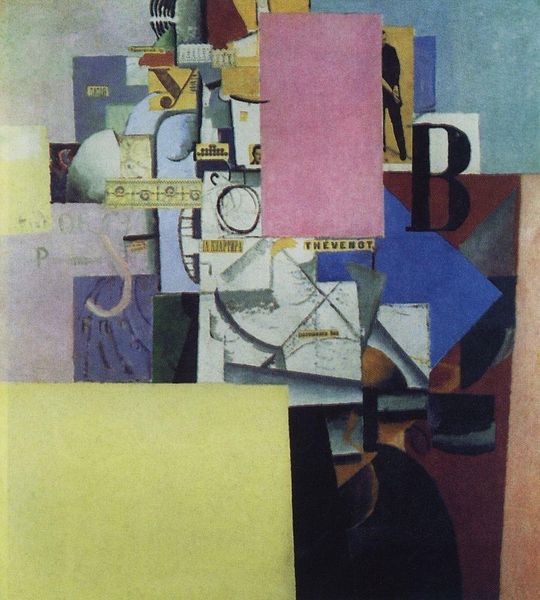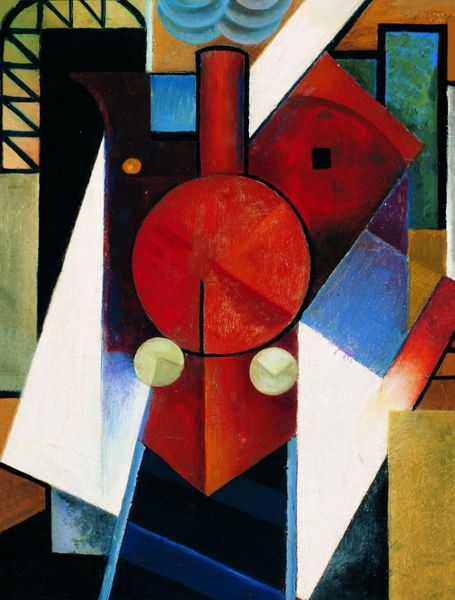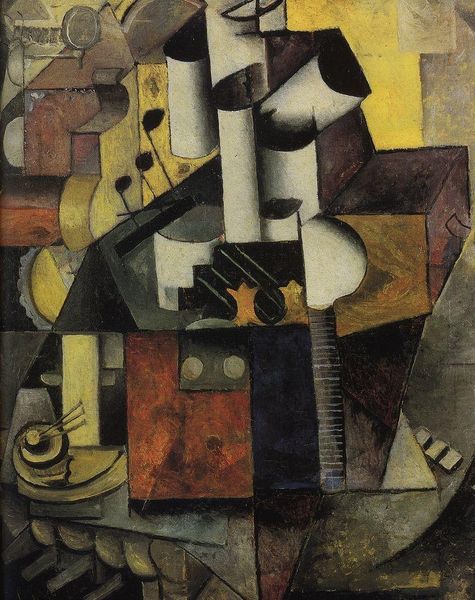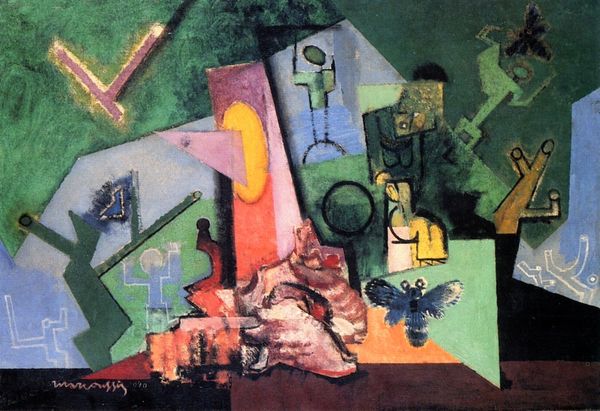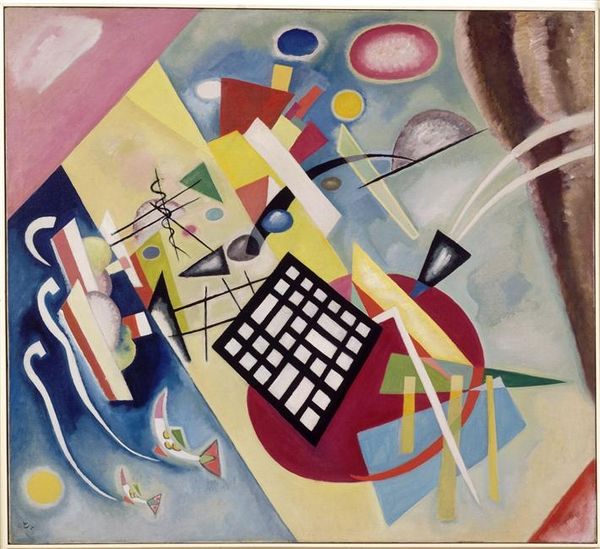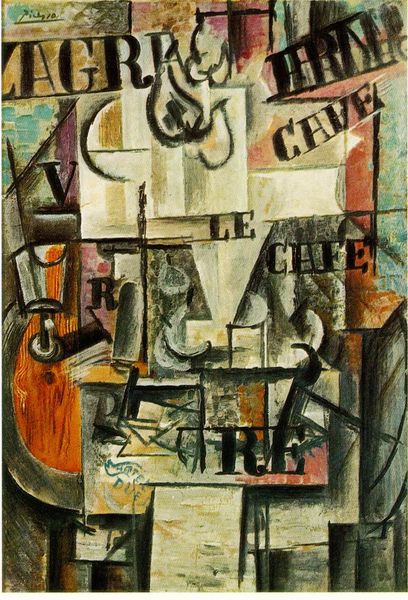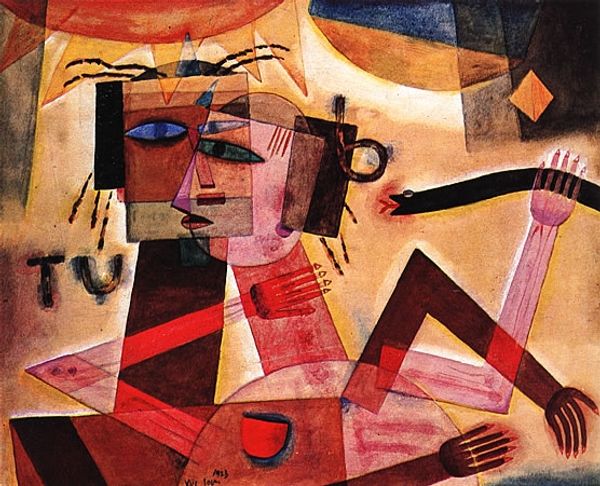
Dimensions: 127 x 200 cm
Copyright: Public domain
Curator: It feels like music made visual—all soaring notes and gentle harmonies. Editor: I'm ready to be swayed. Let’s consider Wassily Kandinsky's oil painting "Yellow-Red-Blue," created in 1925. It now resides at the Georges Pompidou Center in Paris. Curator: Oh, “swayed” is the right word. Looking at this abstract expressionist piece, I imagine Kandinsky almost levitating as he created it. There's such a freedom of spirit captured here! Editor: Indeed. Observe how Kandinsky utilizes geometric forms—circles, triangles, rectangles—to investigate color theory and spatial relationships. You see a tension created between the cool blues and reds and the warmth emanating from the yellow. Curator: Tension is right—I get the impression the canvas is full of barely restrained joy and nervous energy! The contrasting shapes bouncing around, not confined but seemingly flirting with one another. It makes you think about life's juxtapositions, doesn’t it? Editor: Precisely. One could analyze this interplay of shape and hue through a semiotic lens; each elicits a certain symbolic reaction. Kandinsky, influenced by his time teaching at the Bauhaus, was interested in the spiritual in art, breaking free from representational forms toward pure abstraction. Curator: You know, pure is the right word. Pure in a way that only a child, a mystic, or maybe Kandinsky himself could truly get. All the rules of the tangible world sort of dissolve here, giving space for boundless emotion to take shape. Editor: An insightful point, that "dissolving" allows forms to generate affect without concrete referents. Hopefully, listeners now feel ready to embrace Kandinsky’s abstract, spiritual language in this exemplary artwork. Curator: Agreed. There's something wildly accessible and comforting to gain just by looking and listening.
Comments
No comments
Be the first to comment and join the conversation on the ultimate creative platform.
